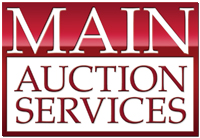Restaurant - Procedures & Products That Kill Coronavirus
Ecolab Expert Advice
Thank you Ron Ruggless for the information in this article.*

How should restaurants clean in coronavirus cases? And even more important is this fact... Coronavirus is a respiratory virus – it is not considered to be a foodborne illness by the CDC, but similar proactive steps such as not working when sick, proper hand washing and thorough disinfecting can help mitigate the risk.
Dispel myths, and keep the focus on allying customer concerns. For the most part restaurants are closed to in house dining across the nation. While many restaurants are closed to patrons, many are serving the public thru their drive thru windows, and with delivery options from local and area companies. Finding ways to scrub kitchens from top to bottom, and keeping staff in line with cleaning protocols is the critical issue.
What should those cleaning methods and protocols entail? Nation’s Restaurant News asked Mandy Sedlak, food safety and public health manager for Ecolab’s Ecosure division, to offer her expert advice. Here are their answers:
What are the first steps a restaurant operator should take when they learn an employee or customer has been diagnosed with coronavirus/COVID-19?
Stay calm, follow your company’s communication policy, send the employee home and ask them to call their healthcare provider, and disinfect high-touch guest areas. It’s of utmost importance to ensure everyone is working together and clear steps are followed. Mixed messages can cause confusion and it’s important to make the right decisions quickly and involve the right team. If the employee has stated they are confirmed to have COVID-19, the employee should self-isolate for 14 days and follow guidance from their doctor and the [Centers for Disease Control and Prevention]. If it’s not in your ill employee policy already, add flu-like symptoms and fever for exclusion. Best practice has been to not return until the employee is 72 hours symptom free. With COVID-19, additional precautions are needed to help ensure the safety of your team.
When should a restaurant consider closing to the public?
Restaurants should work with their company and regulatory to discuss possible closures.
What and how should you communicate to your staff? To the public?
Have a plan and talk about it. If reaction to a confirmed case in the area is what prompts conversations; it’s late. These conversations should be happening now. Have open talks with your staff upon check-ins and whenever concerns arise. Talk about proper handwashing, not working when ill and proactively and properly disinfecting. Use education materials from trusted sources such as the CDC. Ecolab also has resources available here to start the conversations and find solutions. We are seeing many restaurants proactively train and provide information to employees, suppliers and others. For the public, ensure all customer-facing employees are giving the same message as one voice, speaking to the facts if customers ask questions. If they ask, tell them the action steps you are taking; increased focus on hand washing, no one working with flu-like symptoms, stepping up disinfecting, etc. Restaurants are stepping it up, and they should consider sharing this information with guests.
What should a “complete and thorough” cleaning involving when coronavirus is suspect? What specific products and techniques do you recommend?
When looking at risks, we can divide them into three areas:
- GREEN: Standard prevention. No direct threat. Follow current procedures: Maintain standard hygiene/ill employee and sanitizing/disinfection practices.
- YELLOW: Risk reduction. Potential for an outbreak in your geographic area or industry. Enhance procedures to respond to an outbreak in your facility, designed to break the chain of infection or illness.
- RED: Proactive Remediation. A publicly declared outbreak in your facility or region disrupting normal business. Heighten pro-active position and reinforce training while following current procedures.
We would consider this a need for “proactive remediation.” The guidelines would be to:
- Heighten pro-active position and reinforce training while following current procedures.
- Reinforce hand hygiene, ill employee policy and cough etiquette.
- Monitor employee health.
- Disinfect with an [Environmental Protection Agency]-registered hard surface contact surface disinfectant according to label directions.
- Carefully read and follow label directions for use and proper contact times. For food contact surfaces, thoroughly rinse with potable water.
- Wash and sanitize food contact surfaces and equipment on a more frequent basis.
- Change out utensils in buffet line on a more frequent basis.
- Perform training, reinforcing cleaning, sanitizing and disinfecting procedures.
- Ensure all hand sinks are properly accessible, not blocked and stocked with warm water, soap and paper towels.
- Increase the frequency of monitoring hand sinks, including those in the guest restrooms, as hand-washing frequency will increase.
- For disinfecting, focus on high-touch objects in the dining room. Door knobs, door handles and push plates, railings, light and air-control switches, faucets, toilet flush levers and the restrooms.
- For a deep clean, also consider taking everything off of the tables and properly disinfecting the table surfaces. Be careful not to contaminate any food products. If salt and pepper shakers are at the tables, empty them before cleaning and allow them to air dry before refilling. The EPA does consider tabletops to be a food contact surface so after table surfaces are disinfected, you’ll need to follow with a wash, rinse and sanitize.
For typical cleaning, right now it is recommended to follow normal sanitizing procedures for food contact surfaces.
- Completely disinfect the guest and employee restrooms.
- Disinfect the service station, bar and lobby counters.
- If menus can be discarded, replace them with new ones if they are on hand. If not, disinfect the menus carefully.
- Disinfect point-of-sale terminals and touch screens and pagers, too. Again, carefully, not to damage electronics.
- Disinfect tables in the kitchen, remembering to move everything away from the area you are disinfecting to prevent chemical contamination.
- Follow with wash, rinse and sanitize. Disinfect handles on coolers and equipment, as well as other handles.
- Wash, rinse and sanitize any food contact wares such as stacked plates or scoops and tongs that are set out and not covered.
- Use approved disinfectants with an EPA “emerging viral pathogen” claim and follow the specified procedures on high-touch guest points.
What routine cleaning should be conducted, such as on consumer-facing parts of the restaurant such as kiosks, counters, cash tills, chairs, tables, door handles?
For disinfecting, focus on high-touch objects in the dining room. Door knobs, door handles and push plates, railings, light and air control switches, faucets, toilet flush levers and the restrooms.
What pieces of advice are we missing in these questions? As we mentioned above, Coronavirus is a respiratory virus – it is not considered to be a foodborne illness by the CDC, but similar proactive steps such as not working when sick, proper hand washing and thorough disinfecting can help mitigate the risk.
Now is the time where you rely on your proactive prevention controls. Standard operating procedures that employees should not work when they are sick, proper hand washing should take place at the right times and cleaning procedures should be effective and well understood by employees. Continue to reinforce and train to your standard operating procedures, preventative controls and the food safety culture in your location.
As a dining patron in your city, you must have a working understanding that all restaurants have a common goal with health departments protect their guests. Current city code is the implementation of that goal. This protocol in place ensures that employees and the communities in which they serve are approved and graded by the same standards.
In addition restaurant companies and Health Departments are taking additional actions to make sure all illness including COVID-19 is erradicated. There has been tremendous effort by restaurant companies to keep ill employees out of the restaurants, increase handwashing even more than they already do and disinfect surfaces on an increased basis. Companies are also sharing prevention steps and best practices with each other.
*Ron Ruggless is the Southwest Bureau Chief, for Nation's Restaurant News and covers the states of Arizona, Arkansas, Kansas, Louisiana, Missouri, Mississippi, New Mexico, Oklahoma and Texas. He joined NRN in 1992 after working 10 years in various roles at the Dallas Times Herald newspaper, including restaurant critic, assistant business editor, food editor and lifestyle editor. He also edited several printings of the Zagat Dining Guide for Dallas-Fort Worth, and his articles have appeared in Food & Wine and Self magazines.
If you have additional questions about the information in this article please contace Ron at Follow @RonRuggless






